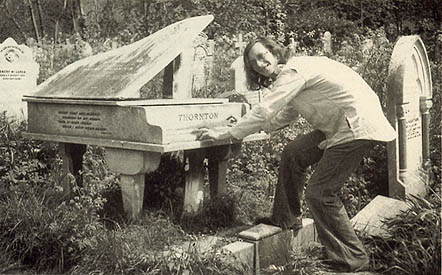[Some responses I wrote this evening, in a semi-drunken stupor, to Mark A. Cantrell, who wrote asking me about my setting of Christian Bok’s Eunoia. Nobody’s really asked me about this in the past, so I thought to post them, why not.]Â
Thanks for contacting me on this. I’m always surprised that people have been so interested in my setting of that part of Eunoia because I actually never thought it that successful, though my favorite part of it is that part you pointed out, the fact that the text goes downright woggy after you hold down on the button. Let me just address the few initial questions:
> First, do you or did you ever have any plans to create settings for any of the other chapters of Eunoia? If not, was there a particular reason why you chose Chapter E?
I did think of doing all five chapters but I realized that with each chapter I’d have to come up with something quite original, and I frankly didn’t have the time, but also, I wasn’t sure that it really added anything to the text. Unlike with Bembo’s Zoo (which you should Google) to merely add an animated interactive dimension to the text didn’t seem to be enough.
Also, to do a justifiable animation to, say, the “o” chapter would have required doing something different with every “o”, not just fade every paragraph into the next, and I didn’t think it was worth the effort. If I had time at a later date to do each chapter, I would, but then I would have to redo chapter “e” because I didn’t think it was that successful. If I had done something amazing with chapter “o” (for example) I would have had to go back and redo the chapters I had already done (which is what happened with “The Dreamlife of Letters,” which took me 6 months).
No particular reason why I chose chapter “e”. Perhaps that’s what Christian sent me. Frankly, I don’t remember. Maybe it was the longest chapter (certainly at that time, see below) so it was the most obvious choice. I don’t remember at all. >I noticed that your setting combines the Chapter E of the book with the part entitled “Emended Excesses.” Was this your decision or one made in collaboration with Bok? What were some of the reasons for this choice?When I did the piece, that part of the book was part of Chapter E. Christian later moved it to the appendix.> Finally, do I understand correctly from the 2001 date on your site that the Flash setting was made available at approximately the same time that Coach House Books published the book version?
Probably not. I think I did my bit at least half a year before the book reached print. But I could be wrong about this. Certainly a few months. Thus the discrepancy noted above.
When I launched the piece, Marjorie Perloff complained about the aspect that let you send the text into a tizzy. But I was more interested in the fact that, when you moved backwards through the text after sending parts into crazy activity, they just rested there, and faded into each other, and it reminded me of walking through the ruins at the World Trade Center after 9/11, coming across these strange wreckages through the fog, one after the other (or maybe walking through any sort of ruin, like in that movie “Excalibur”). I guess this means that the piece was done after 9/11, if that means anything.
I was accused, in my piece for the Inkblot Record, of doing too much “violence” to the text (in that case Dan Farrell’s) and I think that’s what Perloff was accusing me of this time. But frankly, I think this is totally untrue.
Text, once it reaches a digital realm, is always vulnerable to this sort of “violence” — think of the pornolizer or the shizzolator, or anthing sort of text that is screwed up by digital technology (in cell phones, for example) — and so I was merely illustrating the type of violence it could succumb to, but in a friendly, aesthetic way. Of sorts, I suppose. I was simply introducing the text to the digital realm in a “tough love” sort of way, not subjecting it to the sort of abuse that putting it out there, in HTML (for example) might subject it to. I thought it looked great. A Google search is, in this light, more violent than anything I did with it.
Anyway, a few answers quickly before I go to sleep… thanks for asking!












